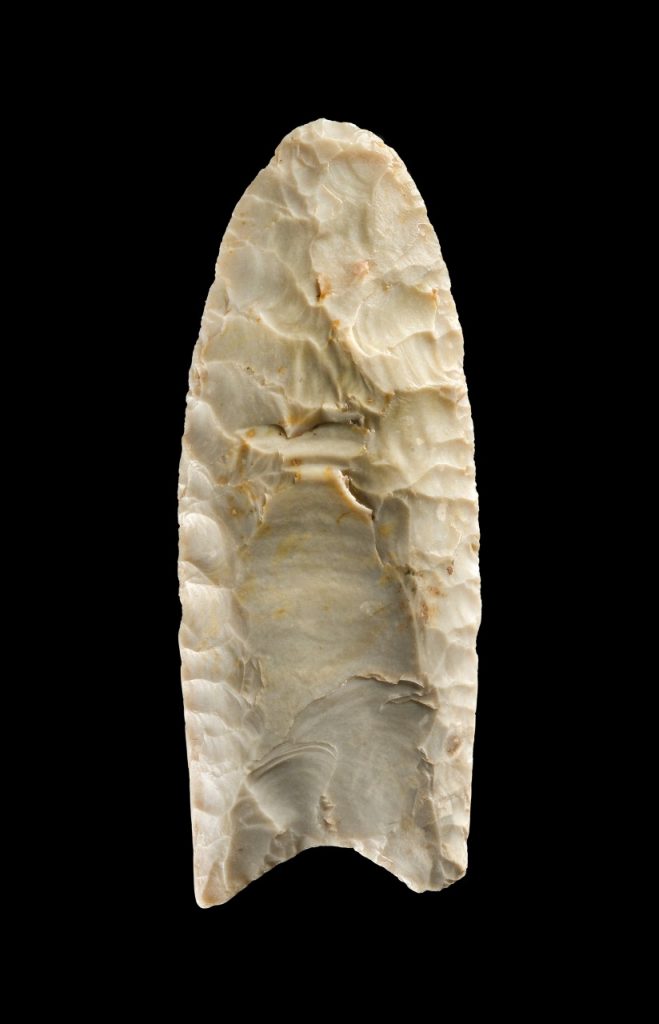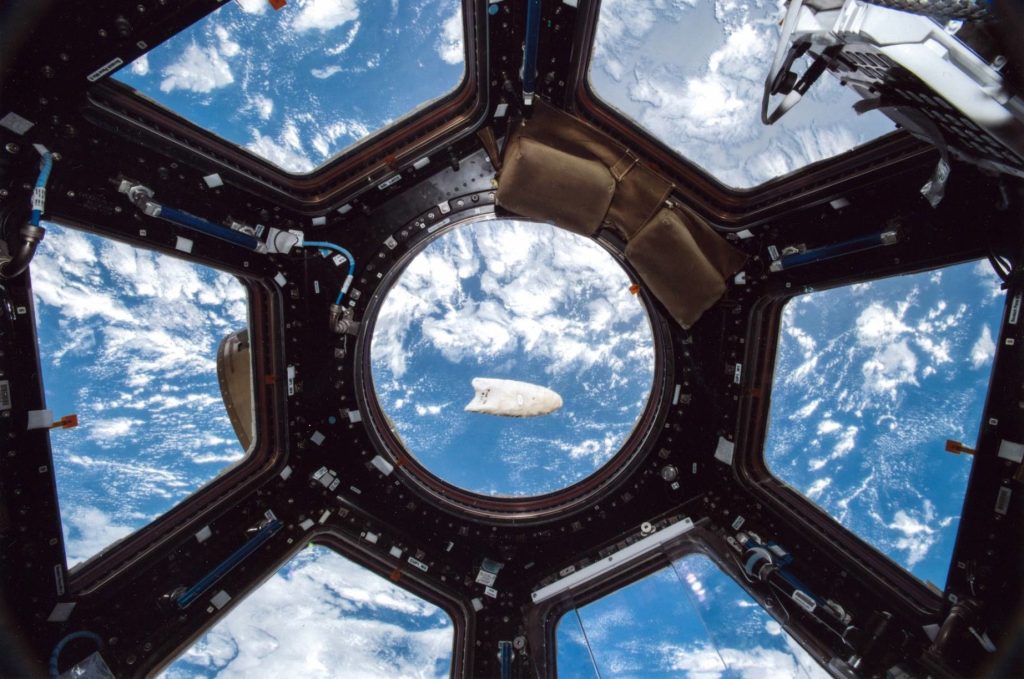A Relic of the Past Soars Into the Final Frontier
In 2014, Steve Lee, a space scientist at the Denver Museum of Nature & Science (DMNS), approached me with an interesting proposition. An astronaut friend, Kjell Lindgren, was going to the International Space Station and could take along a small container of personal effects. Lindgren had graciously asked the museum for a contribution.
In deciding what object to send into space, the first criterion is size. The object has to be small, so many intriguing options (like an Egyptian sarcophagus) are immediately ruled out. Redundancy is a second criterion—you don’t want to send a unique specimen (say, the Hope Diamond) in case it gets lost, broken, or destroyed. A third factor is resiliency—a rocket’s launch, re-entry into Earth’s atmosphere, and landing involve a lot of vibration. Maybe it goes without saying, but you wouldn’t want to send a fragile glass vase on a space mission.
Ultimately, the museum’s anthropology staff decided to send a 13,000-year-old stone spear point from Illinois.
Why? The point is small and lightweight, only a few inches long and weighing less than an ounce. It is redundant—it’s one of many such artifacts in the DMNS collection. And it is resilient. Made of stone, it survived being used, lost, buried, and exposed over the eons before it was discovered in the mid-20th century and donated to the museum in 1991.
Beyond these practical matters, we believed that the artifact symbolized something essential about humanity.
Picture the scene: A highly skilled flintknapper sits with his family in camp, preparing for his next hunting trip in pursuit of big game. Like many hunters, he has his favorite gear, including a lucky spear point he has managed to keep for several months—far longer than average—as his group crossed from their summer to winter hunting range. Because the point has been in his tool kit so long, he’s resharpened it several times, so it’s now about 2.5 inches long and close to being too short to use. Channel flakes (or flutes)—the kind his grandfather taught him how to make—run along both flat sides of the thin, symmetrical point, making it easy for him to attach the blade to his spear. Using pine pitch and fine leather straps, he’ll lash the point to a new wooden throwing spear. Unfortunately, it’s the last time he’ll use his special point: He loses it on his next hunt.
Imagine another scene: A 20th-century farmer tilling his fields in Pike County, Illinois, spots a sliver of white against the fertile, black loam. It’s a white chert spear point roughly 2.5 inches long. Although the spear to which it was attached has long since decayed, he recognizes what it is and admires its beauty. He adds it to the large and growing collection of artifacts he has found over the years.
What crossed the barrier between these two worlds? It was a beautiful, functional artifact that archaeologists call a Clovis point.
In 1932, archaeologists working at Blackwater Draw, 11 miles southwest of Clovis, New Mexico, made an astonishing discovery—distinctive spear points and other stone tools associated with the bones of large ice age animals, including woolly mammoths, camels, horses, bison, and ground sloths (collectively known as megafauna). The only possible conclusion? Humans had successfully hunted and eaten ice age mammals at some time in the distant past.
Although radiocarbon dating did not exist at the time, later analyses suggested that the Clovis site was about 13,000 years old. The people who butchered animals there were some of the first inhabitants of North America. These people were so good at hunting, armed exclusively with Stone Age weapons, that they may have had a hand in the extinction, via overhunting, of ice age megafauna—but that’s a story for another day.
The spear points found at Blackwater Draw were unlike anything archaeologists had seen before, so they were given a new name: “Clovis.” Clovis folk may have primarily hunted big game, but circumstantial evidence suggests that they must have used and eaten plants too, not to mention fish, shellfish, and other food sources. (Nutritionally, reliance on big game alone just doesn’t work for humans except in extraordinary circumstances.) Thus Clovis points constitute only a small percentage of the artifacts their creators likely made and used.
Clovis sites have been found from Alaska to Florida and in many places in between, all radiocarbon dated to the same relatively narrow time period—from 12,900 to 13,200 years ago. Clovis therefore represents a unique, distinct, and possibly pivotal phase in the history of North America because it constitutes one of the few times that stylistically similar technologies—Clovis points—have been found all across the continent.
Despite the range of Clovis sites, only a portion have been professionally excavated. That means that we don’t know as much as we would like to about the people who made them. Nevertheless, even a simplified Paleoindian narrative has a certain romantic appeal: small, nomadic bands of aesthetically inclined hunters on the move and taking massive (and angry) ice age beasts with nothing more than stone-tipped spears. In my experience, that narrative has particular appeal to men of European descent in the American West, for it conveys ostensibly masculine qualities, the enduring pioneer and frontier spirit, and no small degree of Manifest Destiny. Clovis points have, for them, become a symbol of human dominion over nature. Given this, a Clovis point therefore seemed an appropriate object to send across another barrier—into space, the final frontier.
And what about the International Space Station? By any measure it is a scientific, technological, and political marvel. Six decades after the Russians first sent Sputnik aloft, a rotating team of international scientists and astronauts now live in orbit more than 200 miles above Earth, conducting experiments and learning more about life in orbit. In 2015, Lindgren—along with the museum’s Clovis point—spent 141 days on board the station, arriving on July 23 and departing December 11.
Clovis folk, among others in North America, pressed on into previously unknown territory—as astronauts have done by taking us off the blue planet and into space. Clovis points and the space station are tangible symbols of human wanderlust and the ability to break through physical, technological, and psychological barriers. In sending a Clovis point to the space station, we contributed to a transcendent human experience.

































